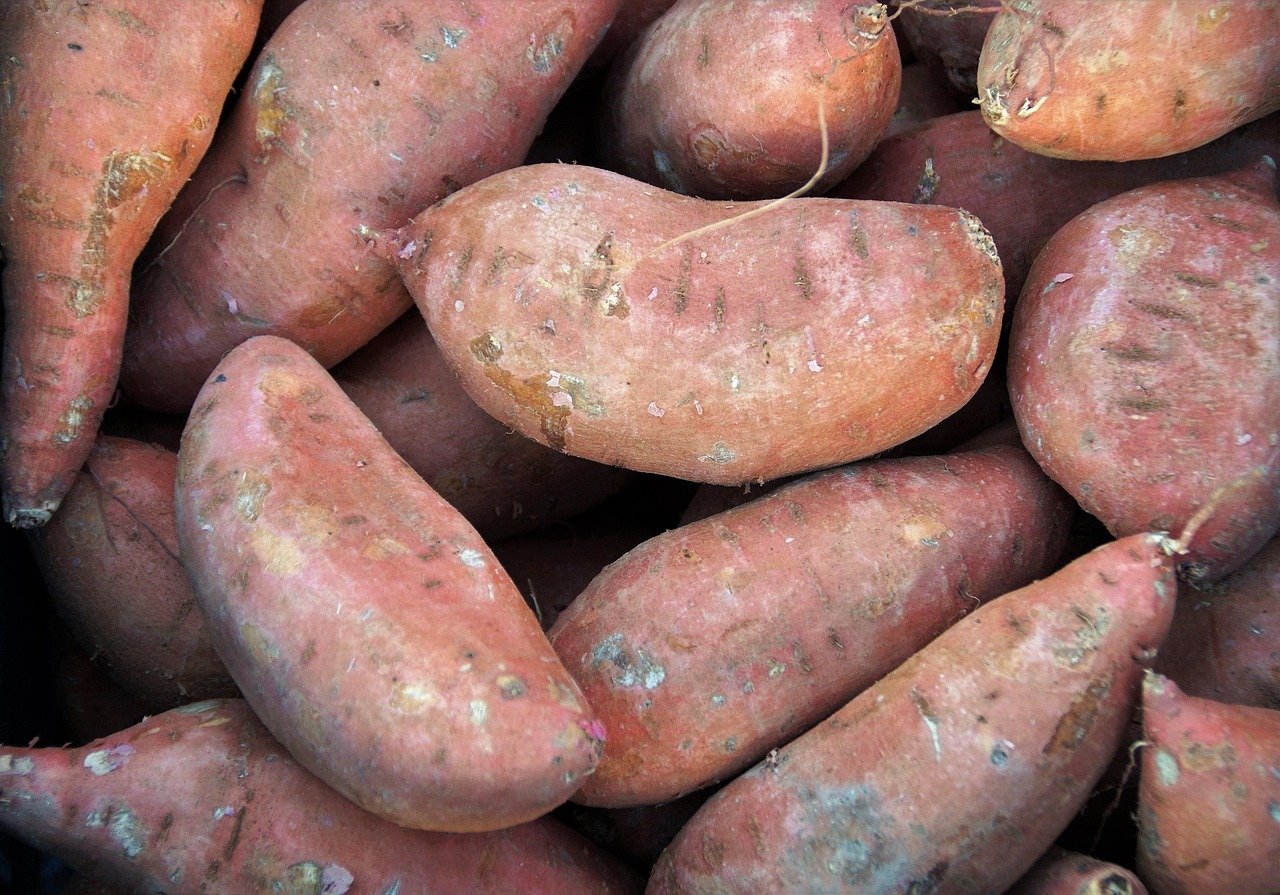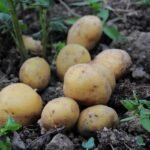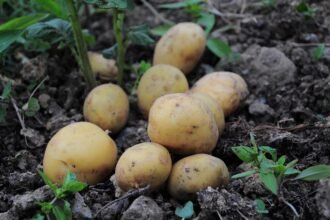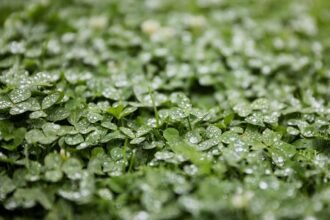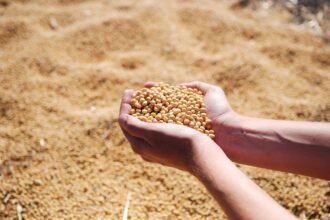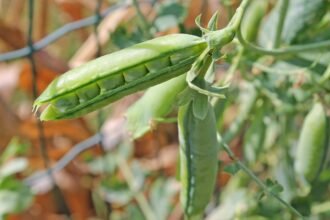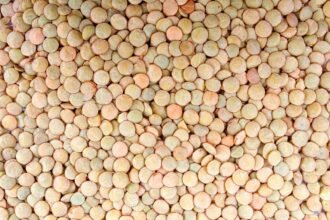Sweet potatoes (Ipomoea batatas) are a highly nutritious root vegetable, rich in vitamins, minerals, and fiber. Grown in warm climates, sweet potatoes are used in various dishes worldwide and are a staple food in many developing countries. Known for their versatility, sweet potatoes are cultivated for their edible roots, and their vines can also be used for animal feed. Successful sweet potato farming requires proper management practices, from soil preparation to pest control and harvesting. This guide provides a comprehensive overview of the key aspects of sweet potato cultivation to help ensure high yields and high-quality produce.
1. Soil Preparation and Fertility Management
Sweet potatoes thrive in well-drained, loose, and fertile soils. Proper soil management is crucial for healthy root development and optimal yields.
Key Steps:
- Soil Testing: Conduct a soil test to determine the nutrient levels and pH. Sweet potatoes prefer slightly acidic soils, with a pH range of 5.8 to 6.2. If necessary, apply lime to raise soil pH.
- Tillage: Sweet potatoes require deep, loose soil for proper root growth. Prepare the soil by plowing to a depth of 25–30 cm (10–12 inches). This helps to break up soil compaction and allows the roots to expand easily.
- Fertilization: Sweet potatoes are moderately nutrient-demanding. Apply a balanced fertilizer with nitrogen (N), phosphorus (P), and potassium (K). Nitrogen should be applied cautiously, as excessive nitrogen can lead to excessive vine growth and poor root development. Apply phosphorus at planting for root development and potassium during the growth phase to enhance root quality and yield.
- Organic Matter: Incorporate organic matter such as compost or well-rotted manure to improve soil structure, water retention, and nutrient availability, especially in sandy soils.
2. Selecting the Right Sweet Potato Variety
Choosing the right sweet potato variety is essential for optimizing yield, quality, and disease resistance. Different varieties have different growth requirements and are suitable for different climates and purposes.
Sweet Potato Varieties:
- Orange-Fleshed Varieties: These are the most commonly grown varieties, known for their sweet flavor and high vitamin A content.
- White-Fleshed Varieties: These varieties are less sweet and are popular in certain regions for savory dishes.
- Purple-Fleshed Varieties: These varieties are rich in antioxidants and are often grown for their health benefits and unique color.
- Disease-Resistant Varieties: Choose varieties resistant to common diseases like root rot, weevil infestation, and nematodes, which can reduce yield and quality.
Select varieties that are suitable for your local climate, soil conditions, and market preferences.
3. Planting and Sowing Techniques
Proper planting techniques ensure good establishment and healthy growth, leading to higher yields of quality roots.
Key Steps:
- Planting Time: Sweet potatoes are warm-season crops and should be planted after the danger of frost has passed, typically when the soil temperature reaches 18–21°C (64–70°F). The ideal planting time is usually in late spring or early summer.
- Using Slips: Sweet potatoes are usually grown from “slips” (young shoots) rather than seed. Slips are produced from mature sweet potato roots. Plant the slips 2–3 weeks after sprouting, ensuring that they have a good root system.
- Planting Depth: Plant sweet potato slips 7–10 cm (2.8–4 inches) deep, with the roots buried and the top leaves exposed above the soil.
- Row Spacing: The recommended row spacing for sweet potatoes is 90–120 cm (36–48 inches) to allow for vine growth. Within-row spacing should be 30–45 cm (12–18 inches) between plants.
- Seed Rate: Sweet potato slips are typically planted at a density of 8,000–10,000 plants per hectare, depending on the variety and local conditions.
4. Water Management
Sweet potatoes require consistent moisture, especially during the initial establishment and tuber development stages. However, they are relatively drought-tolerant once established.
Key Steps:
- Water Requirements: Sweet potatoes require approximately 500–700 mm (20–28 inches) of water during the growing season. The most critical periods for water are during the first few weeks after planting and during tuber development.
- Rain-fed vs. Irrigated Systems: Sweet potatoes can be grown under rain-fed conditions in areas with regular rainfall. However, in regions with irregular rainfall or during dry periods, supplemental irrigation is necessary, particularly during the tuber formation phase.
- Irrigation Techniques: Use drip irrigation or sprinkler systems to provide consistent moisture directly to the plant roots while minimizing water wastage. Avoid over-watering, as waterlogged soils can lead to root rot and other diseases.
5. Nutrient Management
Proper nutrient management ensures healthy root development and maximizes the potential for high-quality sweet potatoes.
Key Steps:
- Nitrogen Fertilization: Sweet potatoes require moderate amounts of nitrogen. Apply nitrogen in split doses—half at planting and the other half when vines begin to grow. Excessive nitrogen can result in poor tuber formation and excessive vine growth.
- Phosphorus and Potassium: Apply phosphorus at planting for strong root development and potassium during the growing season to support tuber quality and size.
- Micronutrients: Sweet potatoes also need micronutrients like magnesium, sulfur, and calcium for proper growth and quality. Ensure that the soil contains sufficient levels of these essential nutrients.
6. Weed Control
Weeds compete with sweet potatoes for light, water, and nutrients, reducing yield and quality. Effective weed control is essential to maintaining a healthy crop.
Key Steps:
- Pre-emergence Herbicides: Apply pre-emergence herbicides to control weeds before sweet potato plants emerge from the soil. This helps to reduce early competition from weeds.
- Post-emergence Herbicides: After sweet potatoes have emerged, use selective herbicides to manage weeds without harming the crop.
- Manual Weeding: In smaller-scale operations, manual weeding may be necessary, particularly during the early growth stages.
- Mulching: Organic or plastic mulches can be applied around the base of plants to suppress weed growth, retain moisture, and keep the soil temperature stable.
7. Pest and Disease Management
Sweet potatoes are susceptible to a range of pests and diseases that can affect plant health and reduce yield. Early detection and control are essential for preventing major losses.
Common Pests:
- Sweet Potato Weevil: This is one of the most damaging pests, affecting the tubers. Use insecticides and practice crop rotation to manage weevil populations.
- Aphids: Aphids feed on plant sap and can transmit viruses. Control aphids using insecticides or encourage natural predators such as ladybugs.
- Root-Knot Nematodes: These soil-borne pests damage the roots, affecting nutrient uptake. Use nematode-resistant varieties and practice crop rotation to manage nematode populations.
Common Diseases:
- Cercospora Leaf Spot: This fungal disease causes lesions on the leaves, reducing photosynthesis and weakening plants. Use fungicides and resistant varieties for control.
- Fusarium Wilt: A fungal infection that attacks the roots and reduces plant vigor. Rotate crops and use resistant varieties to manage Fusarium wilt.
- Black Rot: This bacterial disease causes blackening of the tubers. Use disease-free seed potatoes and practice crop rotation to reduce the incidence of black rot.
- Integrated Pest Management (IPM): Combine biological control, crop rotation, resistant varieties, and minimal pesticide use to manage pests and diseases effectively.
8. Harvesting and Post-Harvest Handling
Proper timing and techniques are crucial for harvesting sweet potatoes to maintain their quality and minimize losses.
Key Steps:
- Harvest Timing: Sweet potatoes should be harvested when the vines begin to yellow and die back, usually 90–150 days after planting, depending on the variety. The tubers should be mature and fully developed at this stage.
- Mechanical Harvesting: For large-scale farms, use mechanical harvesters to dig up the sweet potatoes, ensuring minimal damage to the tubers.
- Manual Harvesting: In smaller operations, manually dig up sweet potatoes using a fork or shovel, taking care to avoid bruising the tubers.
- Curing: After harvesting, cure sweet potatoes in a warm, humid environment (25–30°C or 77–86°F) for 5–10 days. This helps to harden the skin and improve storage life.
- Storage: Store cured sweet potatoes in a cool, dry, and well-ventilated area. The ideal storage temperature is 13–16°C (55–60°F). Proper storage prevents spoilage and extends the shelf life of the tubers.
9. Sustainable Sweet Potato Farming Practices
Sweet potatoes are an environmentally friendly crop, but adopting sustainable farming practices helps to improve soil health and reduce environmental impact.
Sustainable Practices:
- Crop Rotation: Rotate sweet potatoes with other crops like legumes or cereals to improve soil fertility, reduce pest pressure, and break disease cycles.
- Conservation Tillage: Minimize tillage to reduce soil erosion, improve water retention, and maintain soil structure.
- Water Conservation: Use efficient irrigation techniques and practice rainwater harvesting to reduce water usage and improve sustainability.
- Organic Farming: Consider growing sweet potatoes organically to reduce dependence on synthetic fertilizers and pesticides, benefiting both the environment and farm profitability.
Conclusion
Sweet potato cultivation requires careful attention to soil health, water management, pest control, and proper harvesting to ensure healthy growth and high-quality tubers. By following best practices for planting, irrigation, and disease management, farmers can maximize yield and quality. Whether growing sweet potatoes for fresh consumption, processing, or other purposes, understanding the technical aspects of their cultivation is key to long-term success.

